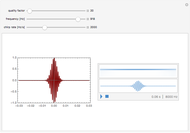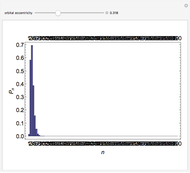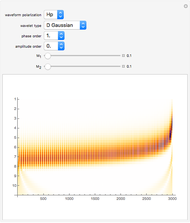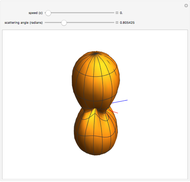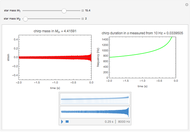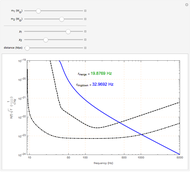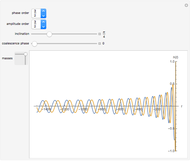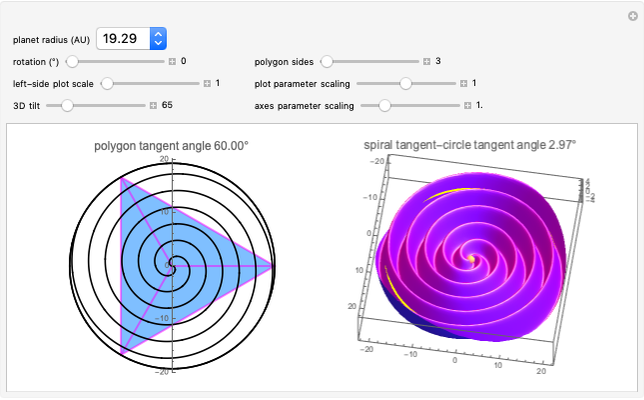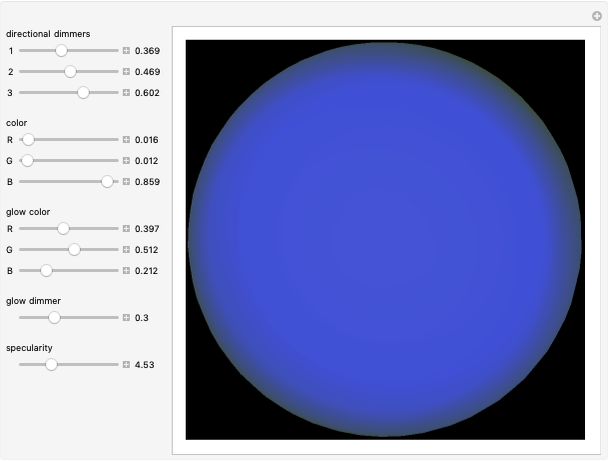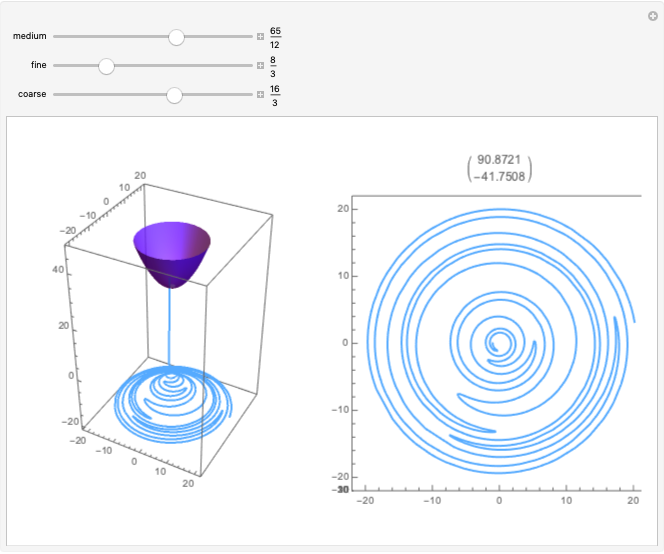Gravitational Wave Hodograms

Requires a Wolfram Notebook System
Interact on desktop, mobile and cloud with the free Wolfram Player or other Wolfram Language products.
Hodograms are parametric-plot representations of perturbation vector data in two or three dimensions. This Demonstration uses a hodogram plot to visualize the one-dimensional gravitational waveburst prototype [1, 2] presented in Chirplet Signals by Satya Mohapatra. Adding a second dimension to the chirplet time series highlights small-amplitude portions of the waveform and temporal asymmetry on either side of the amplitude maximum. This hodogram plot also reveals nested patterns controlled by the chirp rate, quality factor and frequency. The  axis curve is the original sine-Gaussian in Chirplet Signals with identical parameters, while the
axis curve is the original sine-Gaussian in Chirplet Signals with identical parameters, while the  axis curve has a phase shift term that allows sine and cosine to be interchanged. The plot hue changes with time. The initial time is cyan, and the final time is blue.
axis curve has a phase shift term that allows sine and cosine to be interchanged. The plot hue changes with time. The initial time is cyan, and the final time is blue.
Contributed by: Alexandra L. Brosius (February 2021)
Open content licensed under CC BY-NC-SA
Snapshots
Details
Analysis of gravitational wave data requires one to distinguish between background amplitude components and wave amplitude components. In plasma physics, hodogram analysis allows for adaptive sorting of wave and nonwave data [3, 4]. Although gravitational wave signals differ from electromagnetic signals, hodogram analysis may be useful for identifying waveforms and cataloging gravitational wave sources. The Demonstrations Sine-Gaussian Signals and Chirplet Signals contain information about chirplet waveforms and their applicability to gravitational wave detection.
References
[1] E. Chassande-Mottin, M. Miele, S. Mohapatra and L. Cadonati. "Detection of Gravitational-Wave Bursts with Chirplet-like Template Families." arxiv.org/abs/1005.2876.
[2] S. Mohapatra, Z. Nemtzow, E. Chassande-Mottin and L. Cadonati. "Performance of a Chirplet-Based Analysis for Gravitational Waves from Binary Black Hole Mergers." arxiv.org/abs/1111.3621.
[3] A. L. Brosius, A. Szabo, A. Koval and L. B. Wilson, "Minimum Variance Analysis of Planetary and Interplanetary Plasmas," American Geophysical Union (AGU) Fall Meeting 2020, Washington DC: American Geophysical Union, 2020. agu.confex.com/agu/fm20/webprogram/Paper743885.html.
[4] A. L. Brosius and L. B. Wilson III, "Minimum Variance Analysis of Diverse Astrophysical Phenomena," National Radio Science Meeting (NRSM) 2021. Washington DC: The National Academies of Sciences, 2021. baas.aas.org/pub/2021n1i405p01/release/1?readingCollection=27a4f9bb.
Permanent Citation







